The World Really is Your Oyster
Do oysters make you horny? For some people, the answer is “yes.” We found that there’s a good reason for this: these molluscs are a rich source of zinc, which increases testosterone (as well as sperm count). Hey, if you’re not sure about your sperm count, we could try to, uh, count it for you. Perhaps we could keep track of this – in the name of science, of course! – at The Naked French Villa. As one of our Off-the-Beaten-Path activity options on that trip, we travel right to the source of this aphrodisiac, to eat what many believe to be “the best oysters in the world.”
We found a great read on these delicious morsels, at BarefootBlogger.com. Enjoy reading today… and tasting, in September!
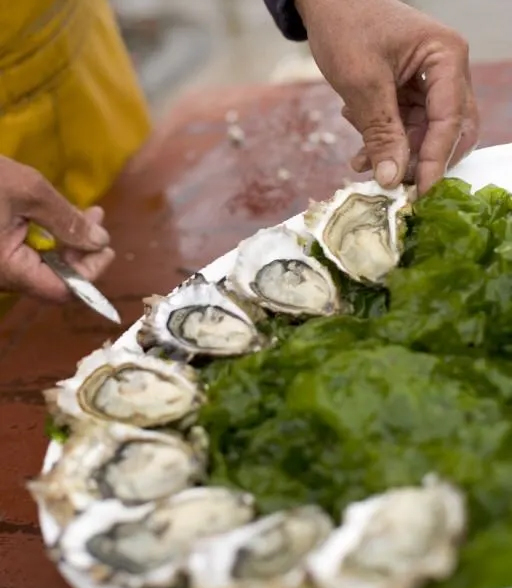
Who’s Got the World’s Best Oysters?
The Barefoot Blogger looked up “the World’s Best Oysters” and found a lot of answers. The French, however, believe theirs are the best… and they believe it with a passion. The French are so passionate about their oysters, they consume more of the hard-shelled delicacies than they export. And along with enjoying the taste of an oyster, there’s a type of French etiquette about oyster eating…
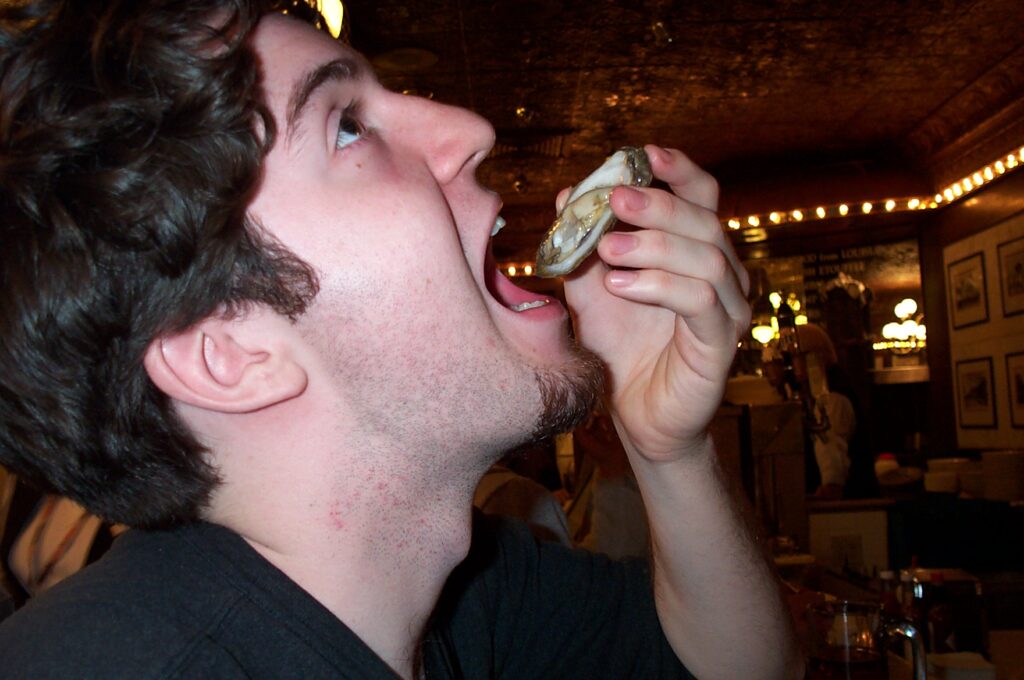
Some Pearls of Wisdom
Oyster farming is a thriving part of the culture and economy of the Étang de Thau (the Thau Lagoon between Sète and Bouzigues) in the Languedoc Roussillon, and the picturesque town of Bouzigues produces the most sought-after oysters in Europe. That is because they are considered much tastier than their ocean-produced counterparts, due to the higher density of salt in the lagoons.
Myths and Misunderstandings
Oyster myths and misunderstandings abound, so I decided to educate myself by going to Bouzigues’ oyster museum (well worth the visit). Also, I talked with local merchants and restaurant owners about oyster facts. I learned that not all oysters are created equal; there is quite a hierarchy. Yes, size does matter.
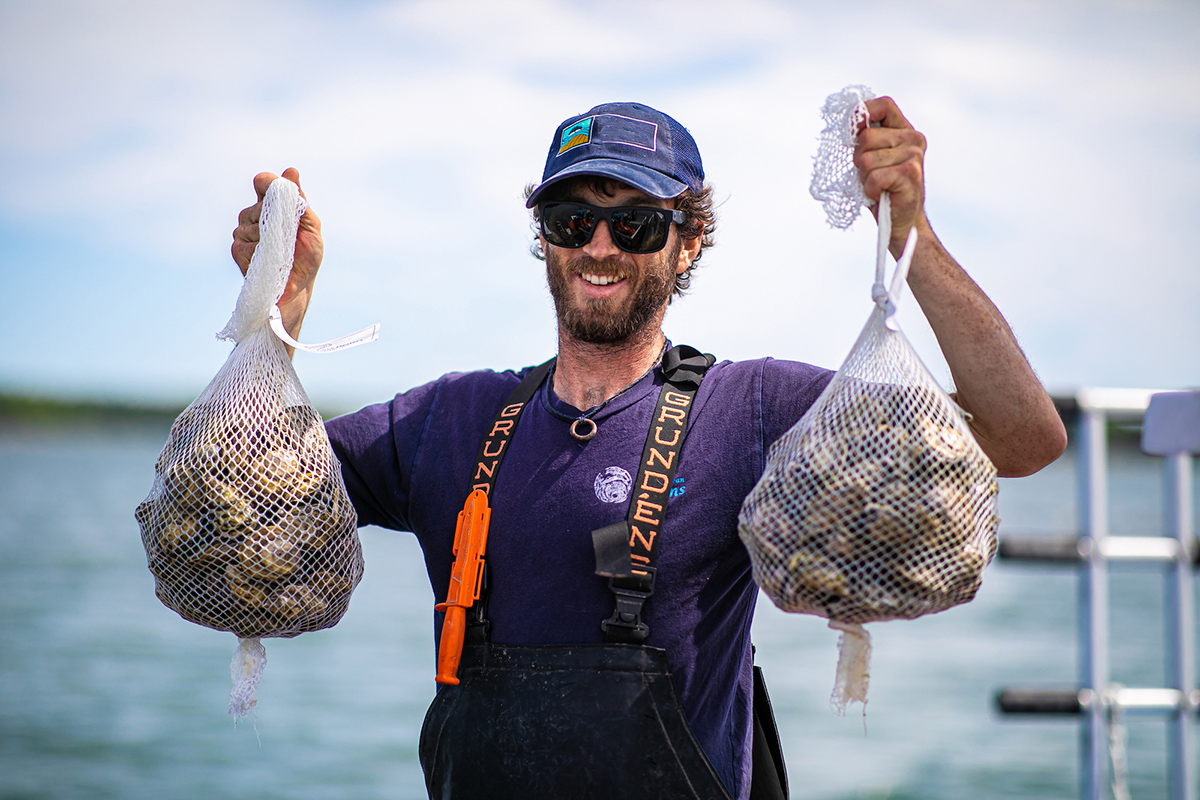
Oysters range in sizes from 1 to 6 or 7. Size one is the largest, yet the lowest in the taste “pecking order.” Nevertheless, it emerges triumphant when baked ‘au gratin’ with parsley, garlic, butter, and breadcrumbs. For the more minor, bluer-blooded relations, a size 3 or 4 simply demands raw consumption. Cremating them in an oven would be an unfortunate ending.
More on that later. First, we need to know how to open – or shuck – the oyster.
Shucking an Oyster (and Leaving Your Fingers Intact)
Special chain mail gloves are available for those wary of injuring their hands, but save your money. Instead, purchase a bottle of Languedoc white Picpoul de Pinet wine. For enjoying oysters, it’s a marriage made in heaven. It ensures your oysters’ last moments are happy ones (they will still be alive, after all). Just follow these directions, and shucking will prove a painless experience:
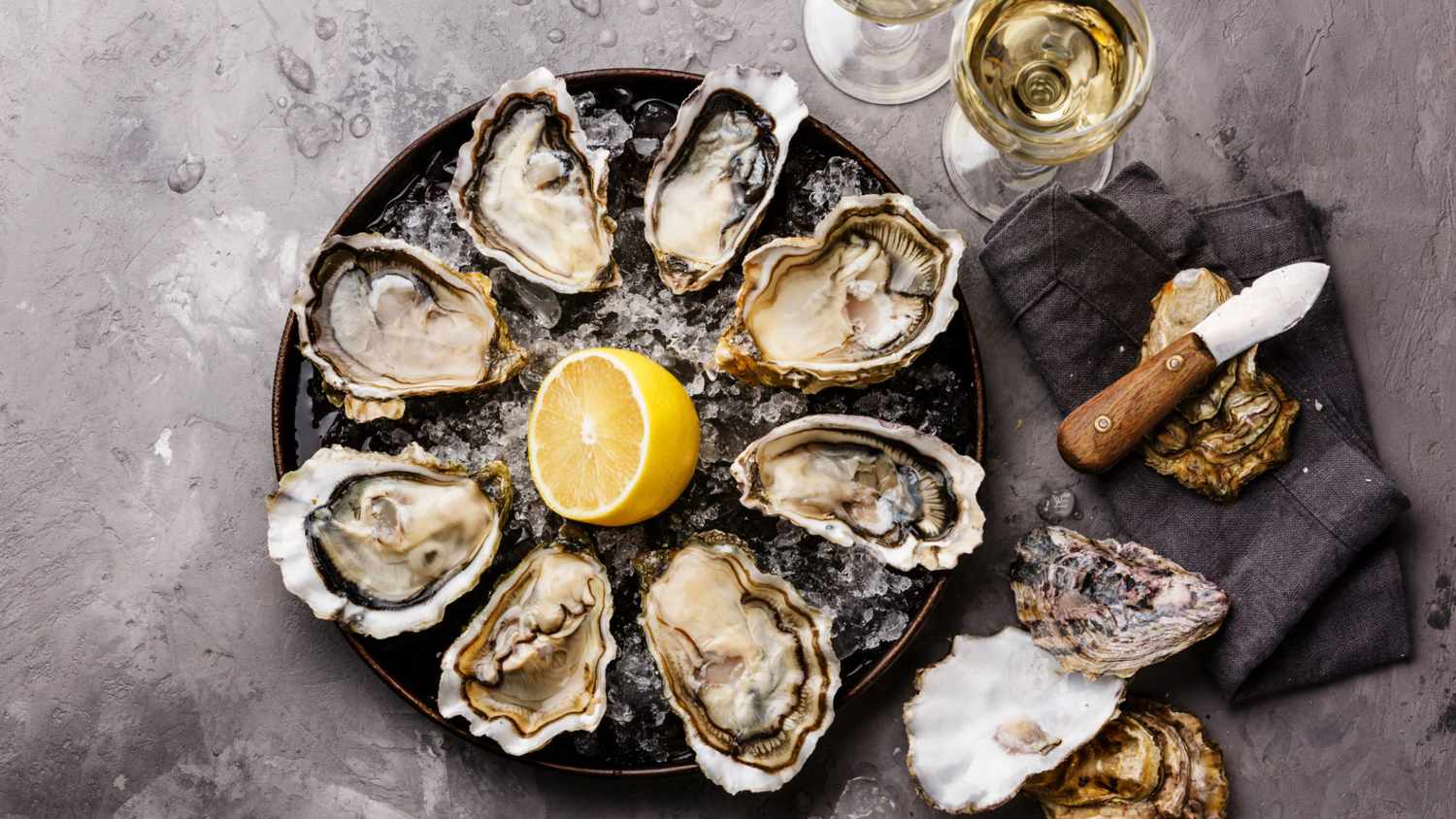
Wrap the oyster in a tea towel or cloth, the flatter shell facing upwards and the hinge pointing towards you.
Grip the oyster/shucking knife firmly, and insert it into the small hole in the hinge. A short knife with a robust and blunt blade can substitute for an oyster knife.
Do not use a sharp kitchen knife. Twist the oyster knife until the shells snap apart (like turning the ignition key in a car). Then, run the knife blade backward and forward along the upper shell to sever the muscle holding the two shells together.
Gently remove the top shell, taking care not to spill any liquid inside. It is a good idea to open the oysters over a bowl. Some people prefer to empty the fluid, but to their surprise, as the oyster is alive… it will refill with water it has been storing.
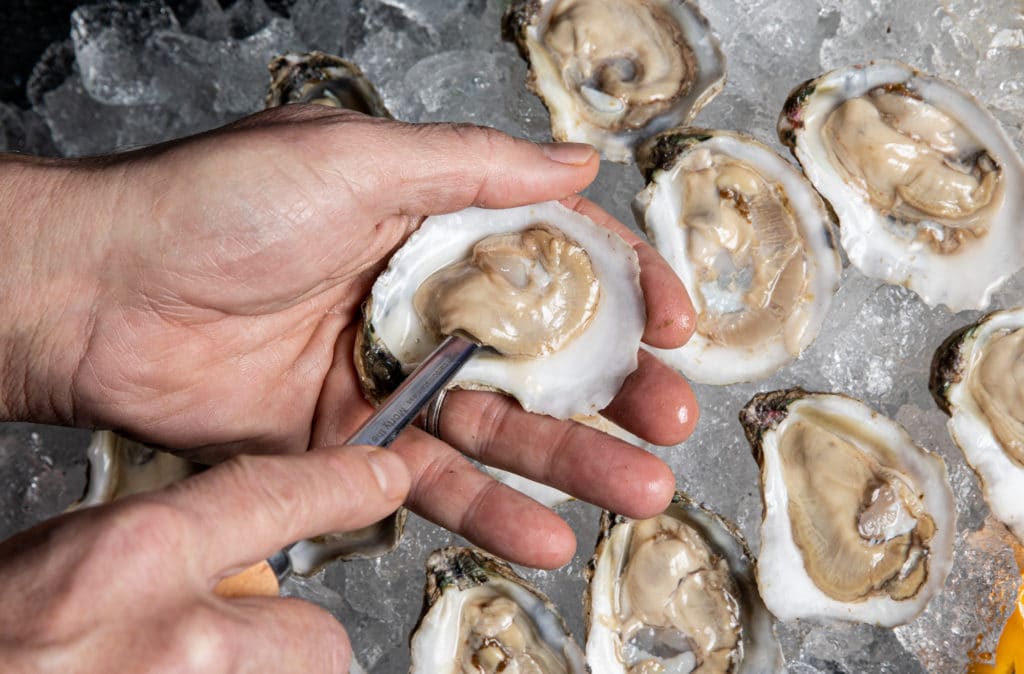
How To Savor Your Oyster
Now that you have successfully shucked your oyster, how should you eat it? Heated debate centers around this question: swallowed whole – or chewed first? No oyster aficionado would forego the subtle flavors (nut or cucumber, depending on the season) released when gently chewed.
What accompaniments should you serve with the oyster? Nothing at all, say the experts – especially given the tastiness of Bouzigues oysters. The North American tradition of adding horseradish or hot sauce is considered tantamount to manslaughter! However, French restaurants offer the option of adding a few drops of lemon or shallot vinegar, which will not detract from the natural flavors (lemon originally was used to check if the oyster was alive: if alive, it ‘cringes’ when the juice is applied).
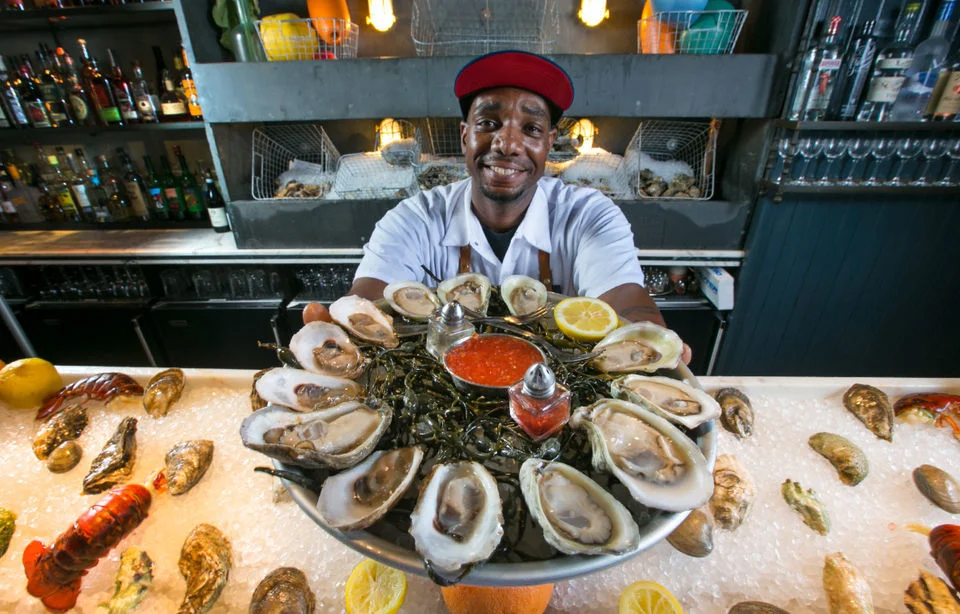
Fun Facts on Oysters
- Oysters can live outside of water for up to 10 days and are good travelers – producers from Bouzigues have exported their oysters to China
- Oysters in water can live up to 20 years
- Oysters are bisexual*. Born as males, they produce sperm, become egg-producing females, and later switch back to male
- Oysters can release around 1 million eggs in one spawning season
- A rich source of vitamins, eating six oysters a day also meets the daily recommended intake of many minerals
*Everything To Sea’s note: Oysters are not bisexual. However, some of our staff are. Oh wait, we’ve digressed… back to the molluscs! Oysters are actually “sequential hermaphrodites.” They begin their reproductive lives in one sexual role, and then change sex at a later point in their life history. All oysters start their lives as males, and change to females. Their reproductive organs produce both sperm and eggs, giving them the capability to change gender.
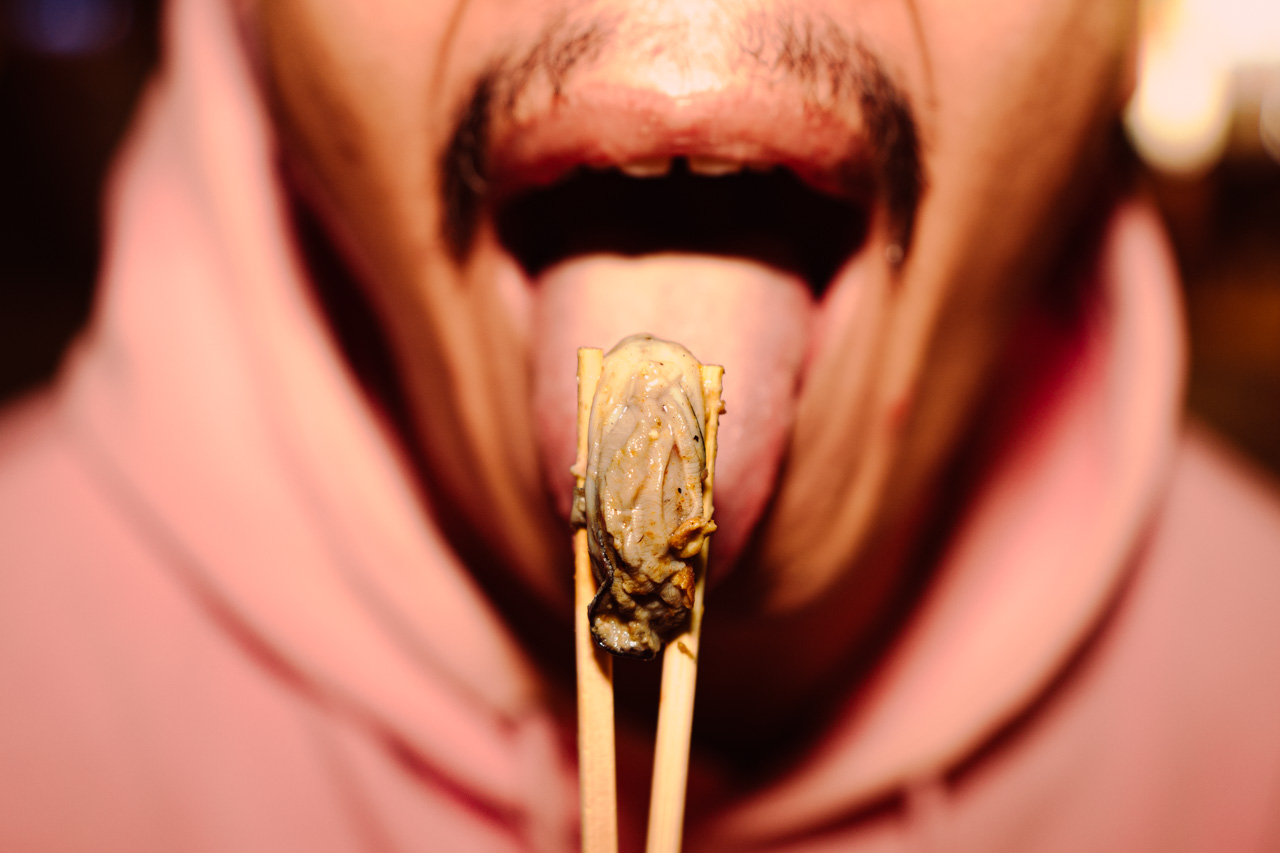
So, Everything To Sea friend… that was a lot about oysters. We didn’t even get to the gem inside: the pearl. What do you think of these quotes?
“Pearls are always appropriate.” – Jackie Kennedy
“When I’m cold I just put another rope of pearls on.” – Dorothy Parker
“The world is your oyster. It’s up to you to find the pearls.” – Chris Gardner
“Watch Military Muscle Man Give Himself a Pearl Necklace in the Woods.” – Something That Just Popped Up on Our Browser


Soooo welll written, educational and amusing !!! Carlos
Looking forward to the excursion this September! Will give the oysters a try…the wine will NOT go to waste.
I love the sense of humor! Can’t wait for September.